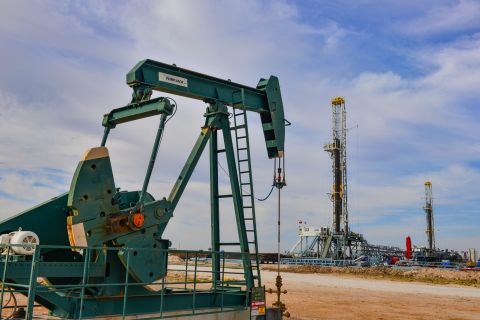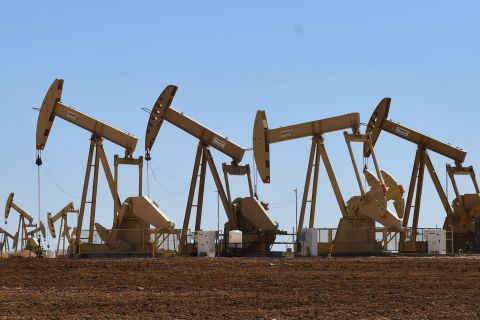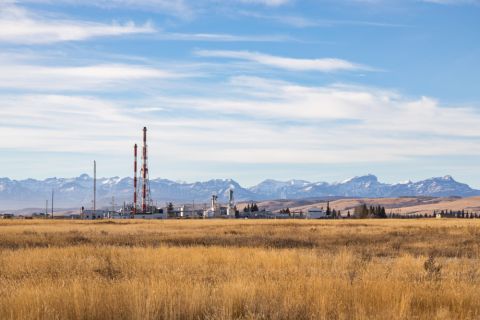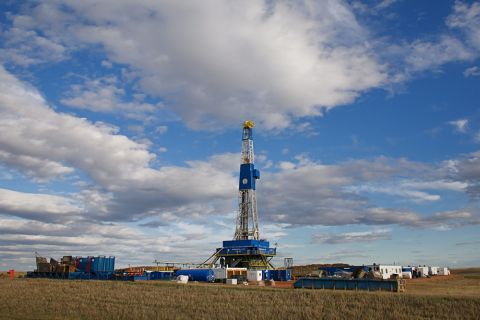When Exxon Corp.'s $81-billion buyout of Mobil Corp. cleared the Federal Trade Commission, and the nascient Exxon Mobil Corp. began trading on the New York Stock Exchange the next day, what kind of energy giant was spawned? "This merger, easily the biggest event in the industry since the breakup of John D. Rockefeller's Standard Oil empire in the early 1900s, has created not only the largest, but also the most efficient energy enterprise ever," says Fadel Gheit, senior energy analyst for Fahnenstock & Co. in New York. The assets of the new company, whose aggregate 1998 revenues topped $170 billion, give it tremendous global reach, says Gheit. "It now does business in more countries around the world and delivers more energy to customers than any other oil company," he says. "Also, it's the most profitable oil company, with close to $10 billion in combined 1999 earnings and slightly more than that on average for the prior five-year period." XOM-with about 3.5 billion shares outstanding-is also the most efficient oil company in terms of return on capital, return on assets and return on equity, he says. For example, during 1994-98, Exxon's average return on capital employed was 13.6% compared with a peer group average of about 10%. "What's even more interesting is that during that same time, Mobil ranked second in this efficiency category, with a five-year average return on capital of 12.1%. Thus, the marriage of the two created the best in class." The new company aims to achieve annual total returns of more than 20%. The analyst predicts that over the next few years, Exxon Mobil's annual earnings will rise from around $10 billion to upwards of $14 billion. "Most of that bottom-line improvement will come from the largest level of cost savings the industry has even seen." His 12-month price target for XOM is $100 per share. Michael C. Young, integrated oils analyst for Deutsche Banc Alex. Brown in Boston, doesn't perceive cost-cutting as high on the list of drivers behind the merger. "The longer-term, strategic rationale was to achieve the enormous critical mass that Exxon Mobil now has in virtually every one of its business segments-the oil and gas upstream and downstream, and chemicals-in every major operating area of the world. Today, there are no obvious holes in the Exxon Mobil asset portfolio." Mobil provided Exxon overnight entry into the global LNG business. "It also brought Exxon into Nigeria, which expanded Exxon's upstream presence in West Africa, where it was already active offshore Angola and the Republic of Congo, as well as onshore Chad and Niger. Similarly, in the Caspian Sea region, where Exxon already had a major E&P presence, Mobil brought to the table its 25% interest in Kazakhstan's onshore Tengiz Field." Downstream, Exxon and Mobil have been two of the most efficient refiners and marketers in Japan. "With the merger, there's now a great opportunity for consolidation and achieving economies of scale, with respect to those operations," the analyst says. "The same applies to the two companies' refining operations in Singapore." What does all this mean for the Exxon Mobil shareholder? "If you look at the 20-year performance chart ending in 1998, the total return for Exxon shareholders-including reinvested dividends -averaged 20%," says Young. "With the addition of the Mobil asset base, Exxon should be able to continue that trend over the next decade." The analyst sees the stock fairly valued at $85 per share. -Brian A. Toal
Recommended Reading
Mighty Midland Still Beckons Dealmakers
2024-04-05 - The Midland Basin is the center of U.S. oil drilling activity. But only those with the biggest balance sheets can afford to buy in the basin's core, following a historic consolidation trend.
Aethon’s Far Western Haynesville: Three Wells, 17.5 Bcf and Still Roaring
2024-02-05 - Aethon’s wells show no signs of flatlining—and neither are Comstock Resources’ tests, one of which has already reached nearly 50% of its previously estimated EUR.
Life on the Edge: Surge of Activity Ignites the Northern Midland Basin
2024-04-03 - Once a company with low outside expectations, Surge Energy is now a premier private producer in one of the world’s top shale plays.
Analyst: Chevron Duvernay Shale Assets May Sell in $900MM Range
2024-01-29 - E&Ps are turning north toward Canadian shale plays as Lower 48 M&A opportunities shrink, and Chevron aims to monetize its footprint in Alberta’s Duvernay play.
Silver Hill Energy Enters Bakken with Liberty Resources Acquisition
2024-01-31 - Silver Hill Energy Partners LP is getting into the Bakken in North Dakota through the acquisition of Liberty Resources II.





